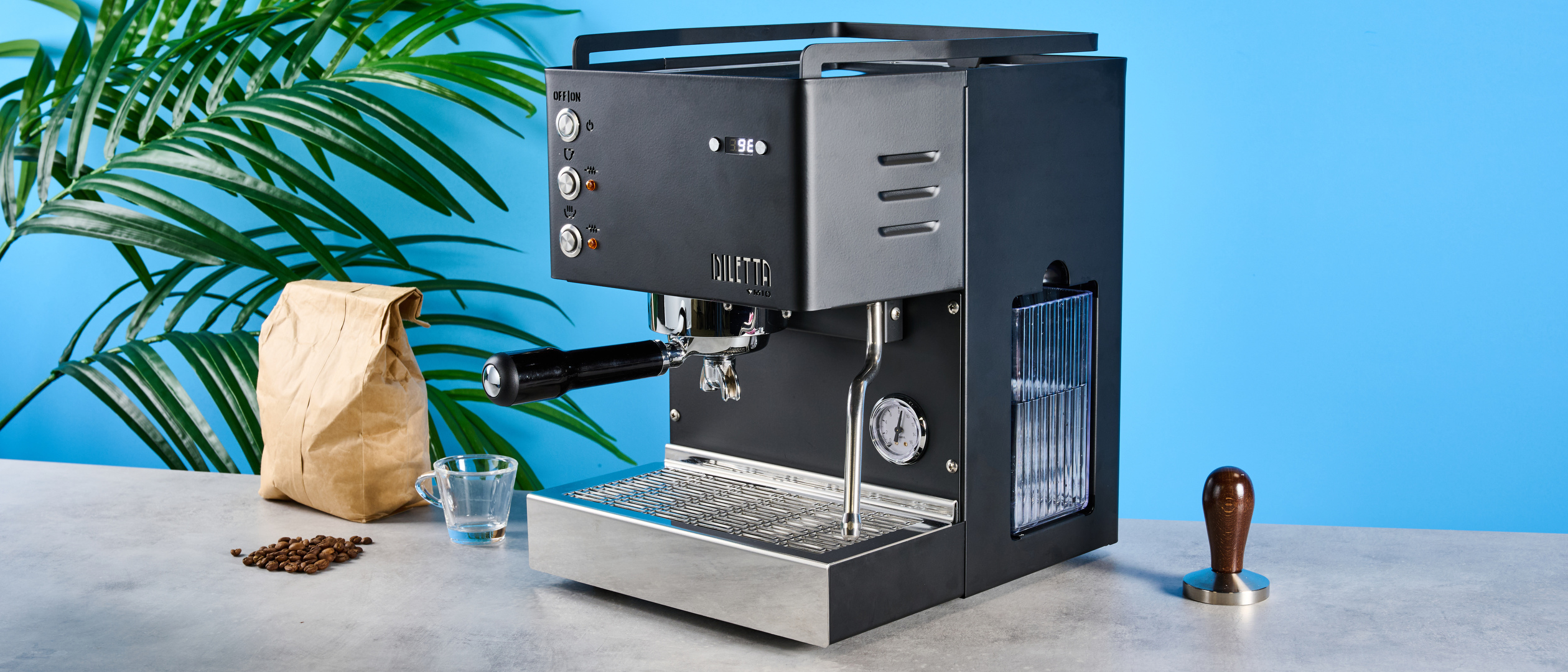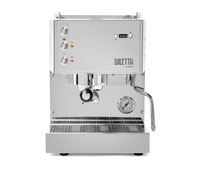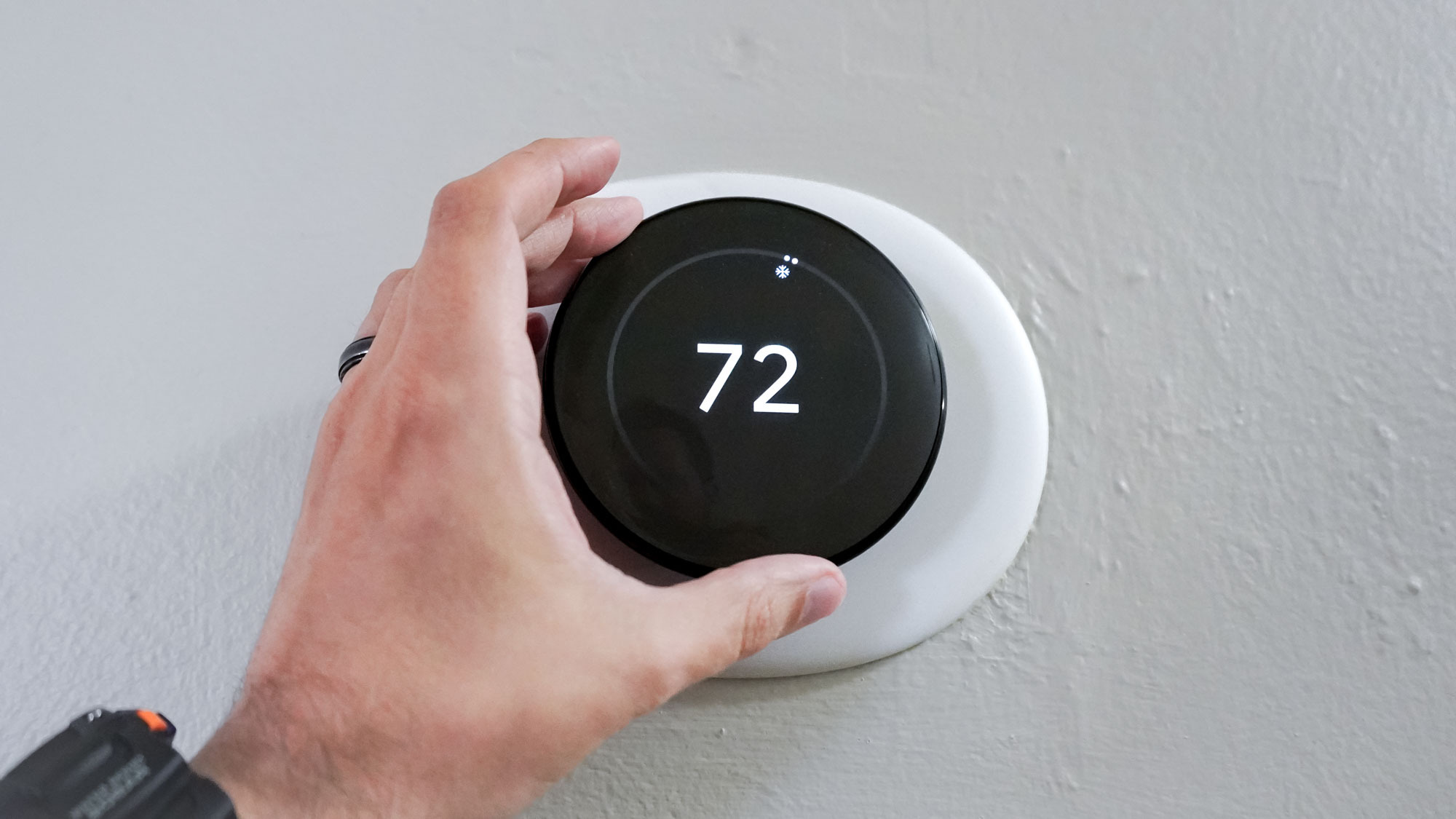Tom's Guide Verdict
The Diletta Mio makes great espresso and boasts a range of professional features. Its dual heating system, combining a boiler and thermoblock, means you can heat milk and pour espresso at the same time. With its quick heat-up and heat recovery, multiple drinks back-to-back are possible, while its PID and OPV will help enthusiasts craft their perfect shot. It isn’t perfect, with a stupidly large drip tray, a small water tank, no anti-scorch rubber on the steam wand and no pre-infusion. But for $250 less than the cheapest dual-boiler rival, I can overlook the flaws.
Pros
- +
Combi boiler & thermoblock design
- +
PID, shot timer and OPV
- +
Very easy to use
- +
Beautiful build and styling
- +
Big drip tray…
Cons
- -
… Drip tray way too tall
- -
Small water tank
- -
No anti-scorch steam wand grip
- -
No pre-infusion
Why you can trust Tom's Guide
I wasn’t expecting to like the Diletta Mio espresso machine quite as much as I do. In fact, “like” is an understatement. I love this thing, and it’s easily one of the best espresso machines you can buy.
The Mio is an enthusiast-tier machine, featuring a combination PID-boiler and thermoblock heating system, allowing for simultaneous espresso pouring and milk steaming. This has its drawbacks, but allows the Mio to undercut premium dual-boiler machines in price, while offering similar professional features. It’s extremely easy to use and extremely forgiving, so could also suit newcomers too.
I won’t lie, the Mio isn’t perfect, but its flaws are relatively minor, making this a decent machine for the money. So, is it right for you? Find out in my full Diletta Mio review.
Diletta Mio review: Specs
Price | |
Heating system | Combination boiler & thermoblock |
Group/portafilter size | 58mm |
Water tank capacity | 2 liters / 67.6 fluid ounces |
PID control | Yes |
OPV control | Yes |
Dimensions | 15 x 10.5 x 17 inches (with portafilter) |
Weight | 35 lbs |
Diletta Mio review: Price & availability
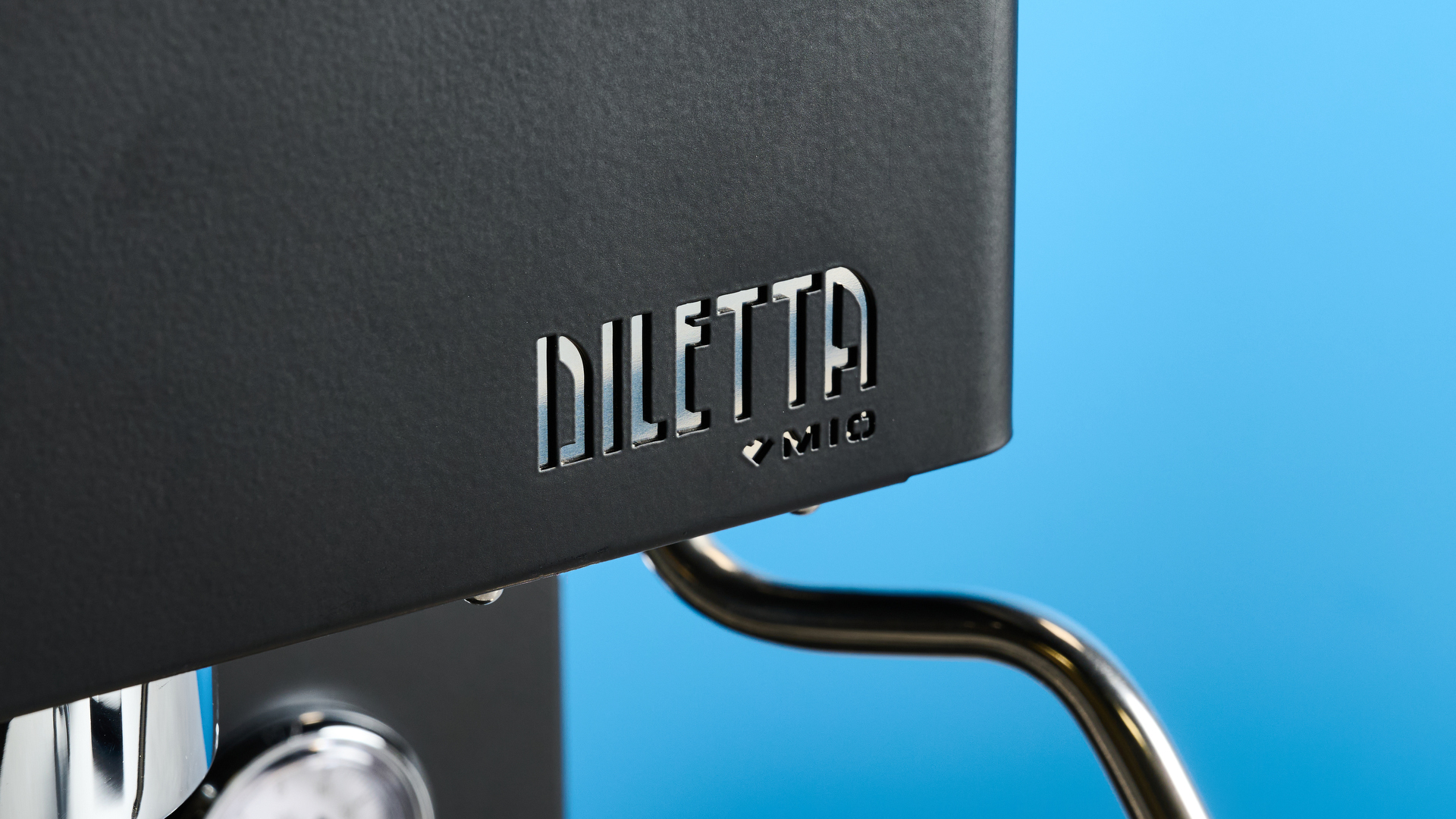
The Diletta Mio costs $1,349 and is available exclusively from Seattle Coffee Gear. It’s only available in the U.S., and with a 110-120V power supply (odd, given it’s made in Italy, which uses 230V mains), so even if you can get it shipped outside the States, you’ll need a step-down transformer to use it.
I’m in the U.K. and used our testing transformer, but it was a total pain in the butt — you need a chunky transformer to support the 1600W power draw, which is not sustainable in my small kitchen.
Diletta Mio: $1,349 @ Seattle Coffee Gear
A combination boiler and thermoblock espresso machine, the Diletta Mio offers the perks of dual-boiler machines, such as simultaneous pouring/steaming and back-to-back drinks, with the benefit of thermoblock machines, including rapid heat-up and easier manual milk steaming. It isn't perfect, but costs less than much of the dual-boiler competition.
$1,349 is pricey, but is in line with similar tier dual-boiler machines (the Mio doesn’t have two boilers but functions similarly). In fact, it’s $250 cheaper than the Breville Dual Boiler ($1,599), and way cheaper than the Smeg EMC02 Mini Pro triple-thermoblock machine ($1,800) or Rancilio Silvia Pro X ($1,990).
Diletta Mio review: Design
The Diletta Mio is beautiful to behold. Crafted from high quality metal components and styled with quintessential Italian timelessness, it’s clearly built to last. Supplied alongside the machine is a gorgeous wooden-handled tamp.
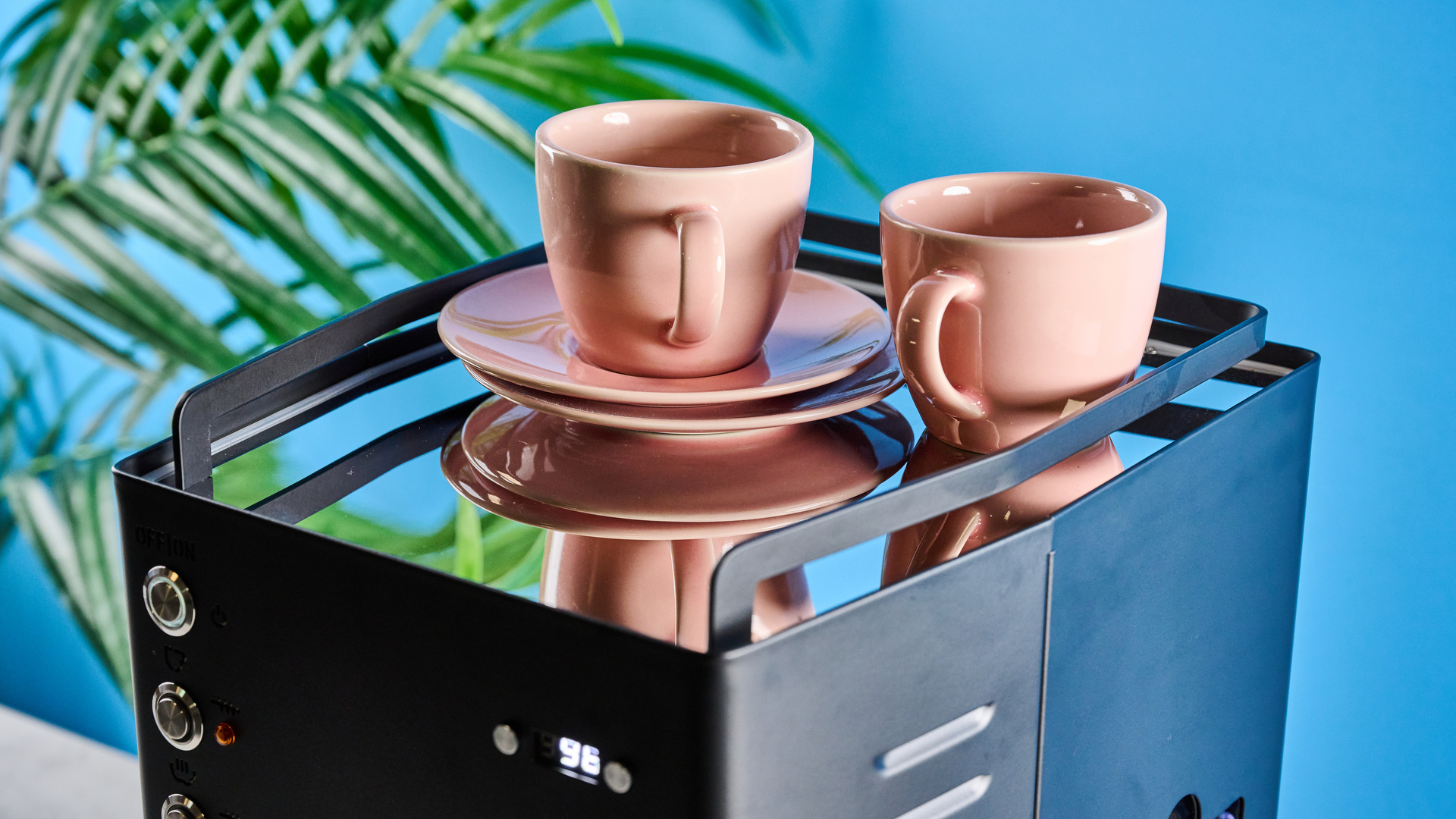
The top of the machine is a polished metal warming plate, which gets impressively warm — much more so than the warming plates on Breville machines.
The Mio uses a 58mm group head and portafilter, which I prefer over the 54mm design used by lower-end Breville machines like my Duo Temp Pro. 58mm is the commercial portafilter standard and therefore easier to source aftermarket accessories for. The wider, thinner portafilter is also much easier to dose +20g into without causing a mess, negating the need to buy a dosing funnel.
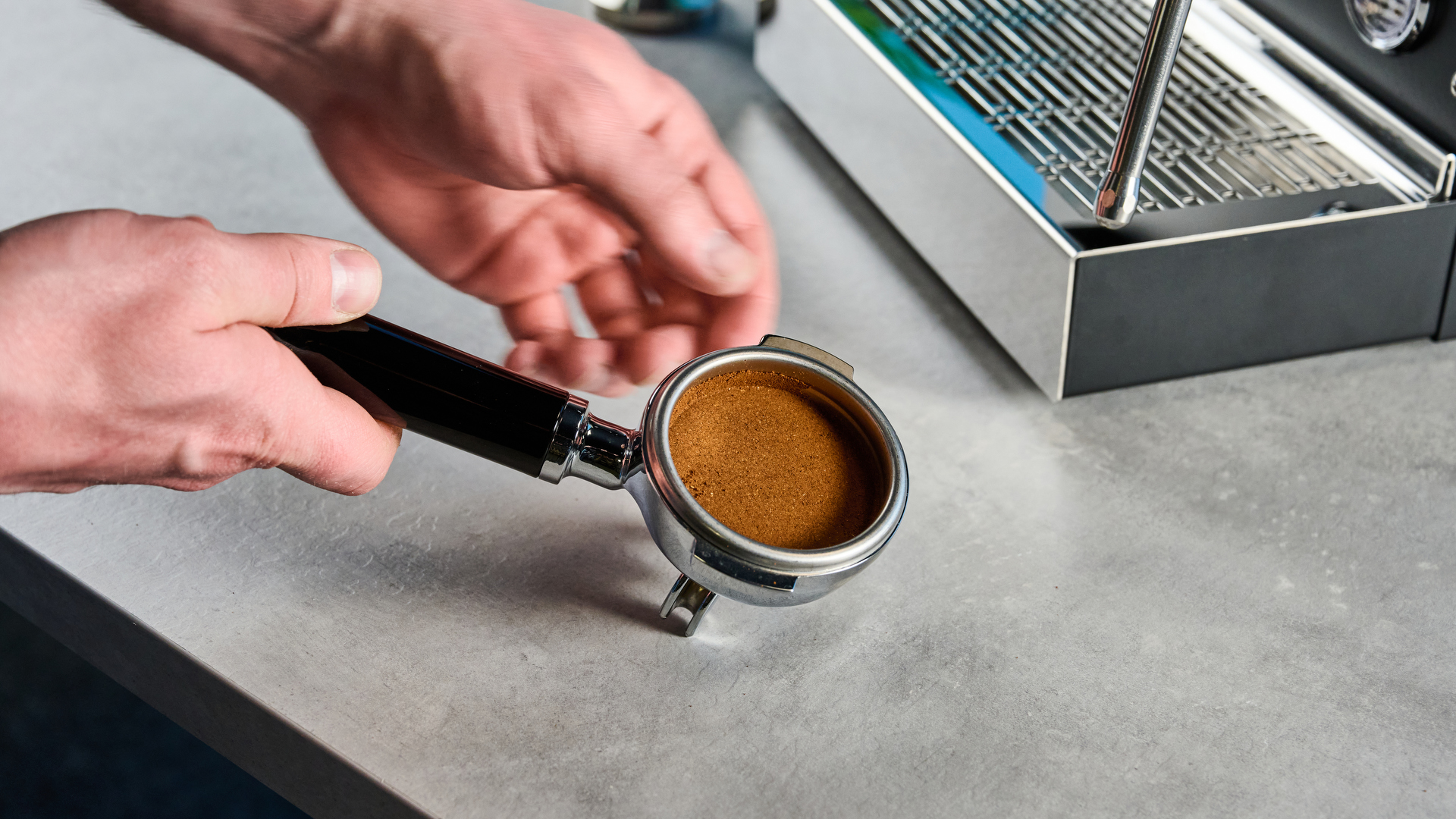
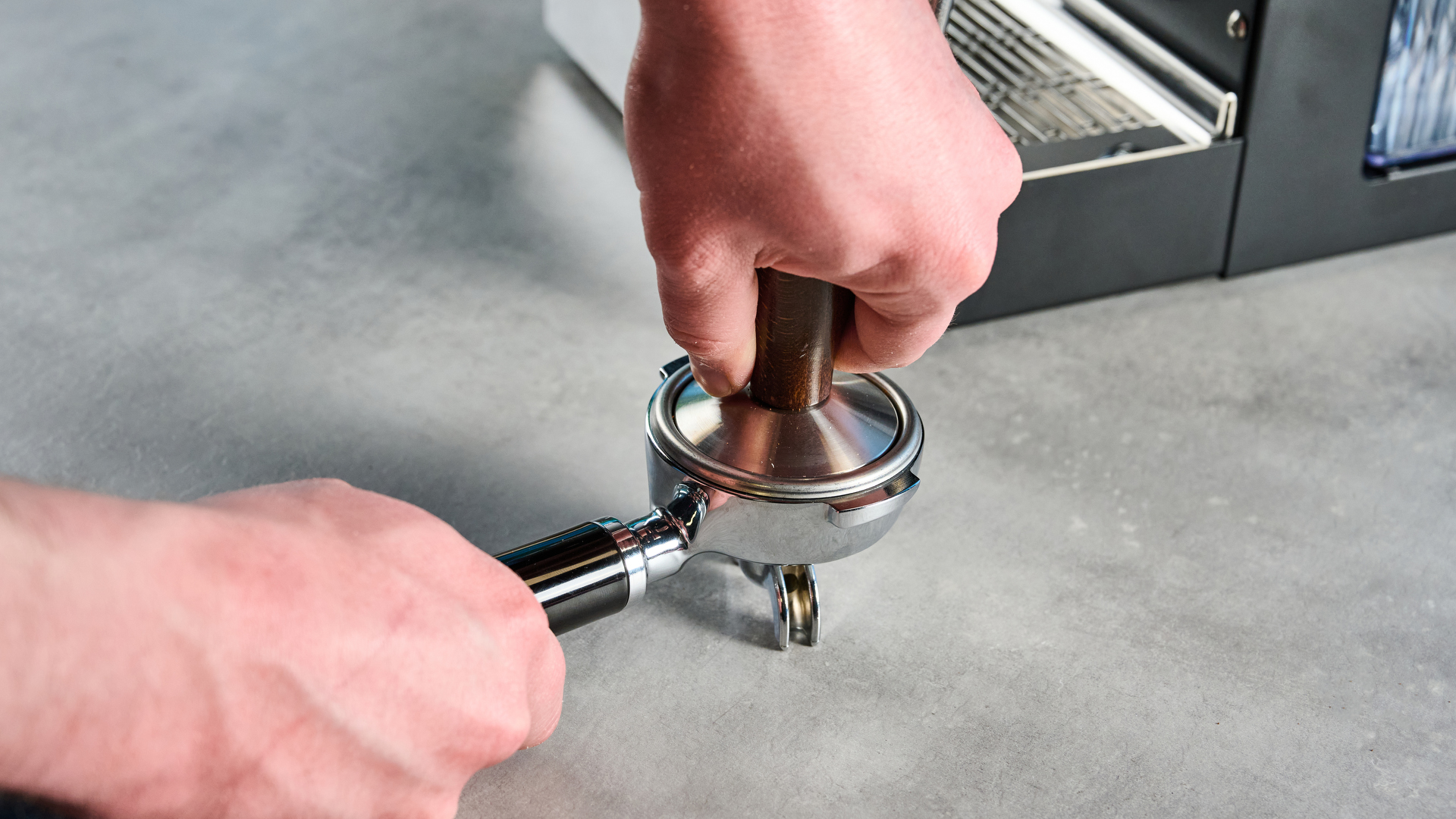
Underneath the group sits a very large drip tray. Seriously, this thing is huge, like a comically oversized jaw. It sits extremely high, making it difficult to fit cups underneath, especially when you’re using an espresso scale. Even using the thin Felicita Arc (one of the best coffee scales around) and Acaia Lunar proved problematic, let alone the chunkier Hario V60 drip scale.

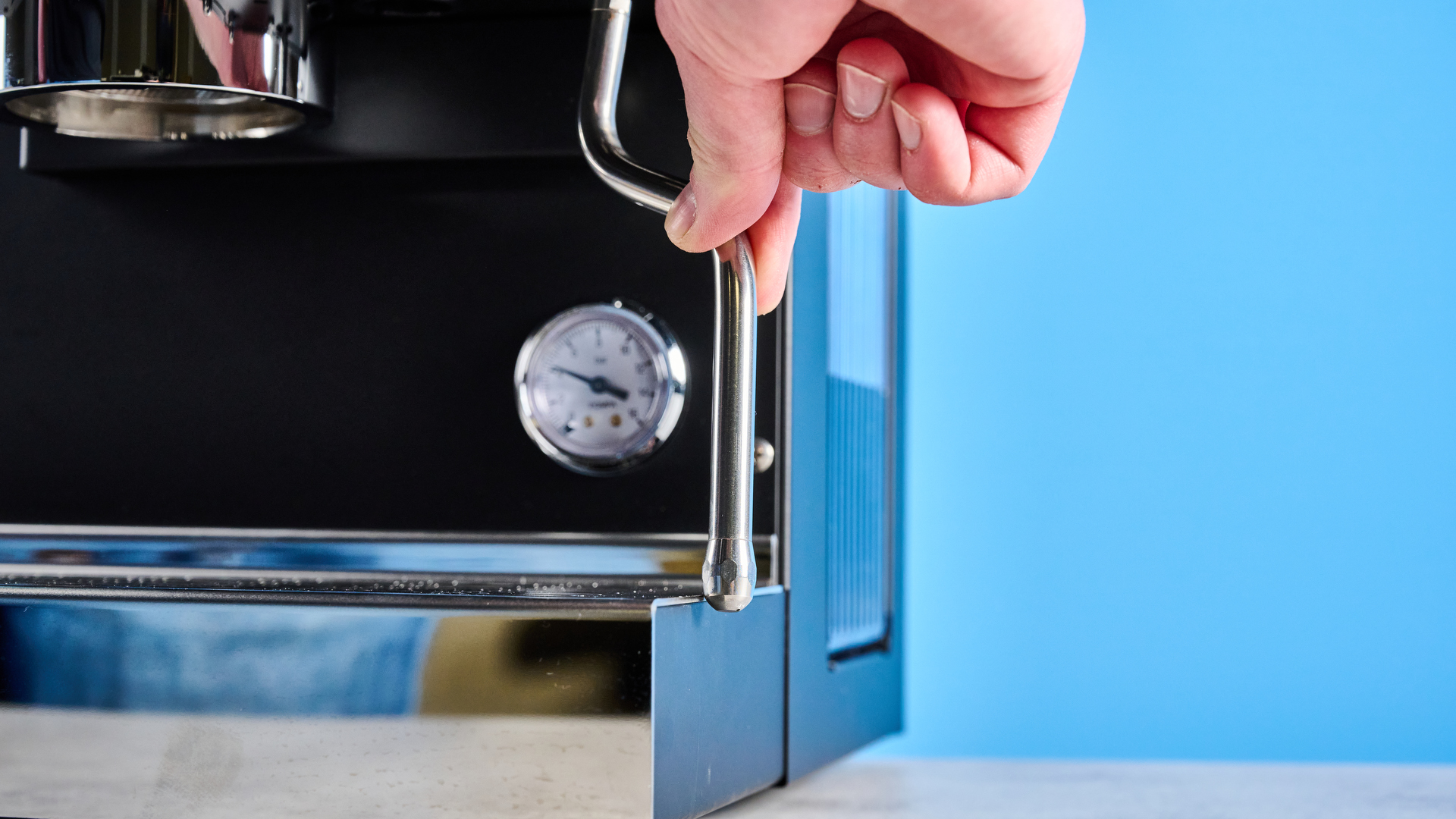
It also means the steam wand doesn’t fit properly between the upper case and drip tray. It will fit, but only if you move it to just the right angle. It’s super frustrating. And there’s no reason for the drip tray to be this large, either, given the Mio’s water tank is fairly puny.
I like to flush through the portafilter into a milk jug when cleaning, which isn't possible on the Diletta Mio, unless of course you take off the drip tray gauze, which gives enough space — check out pictures 3 and 4 in the gallery below.
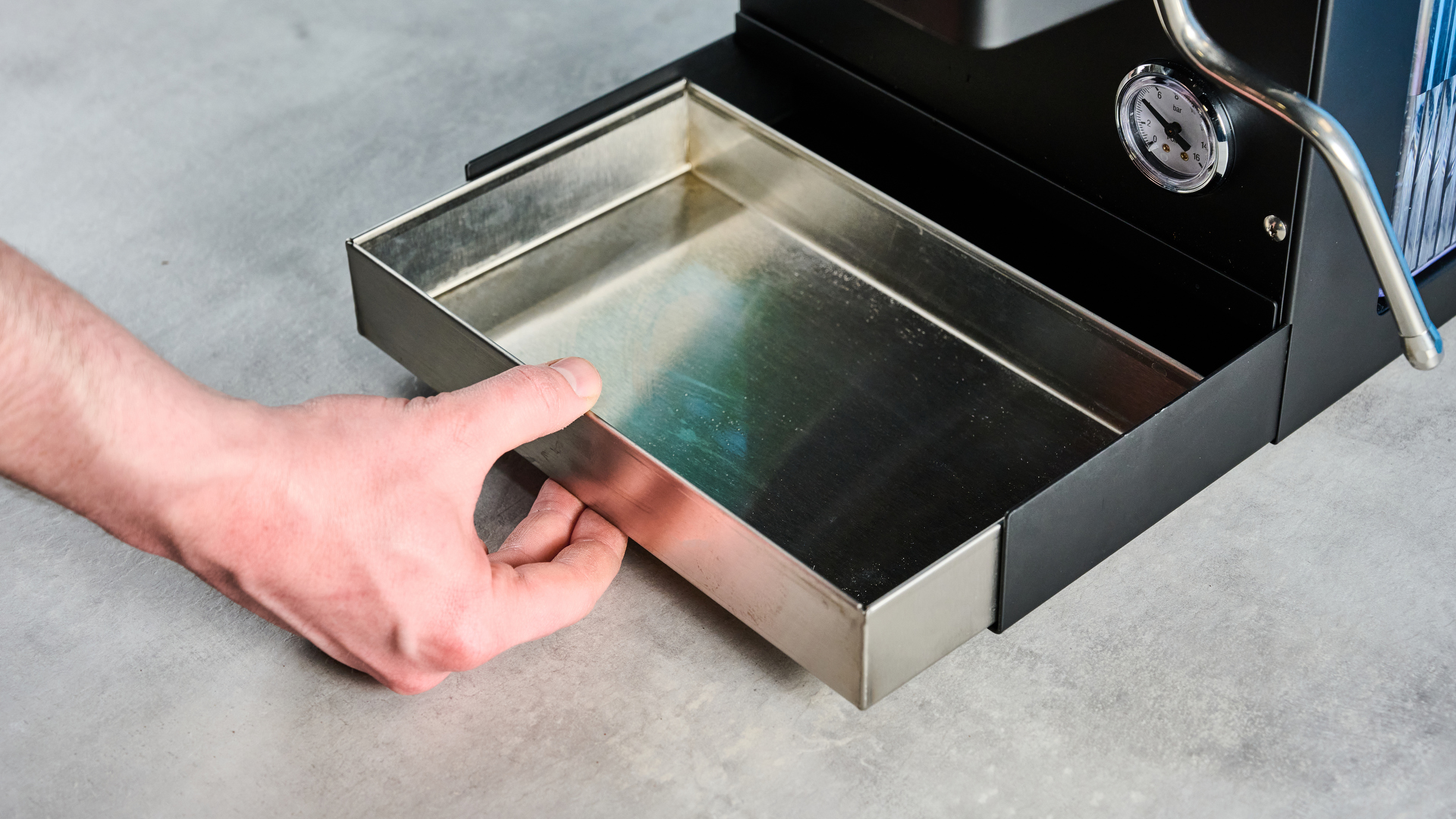
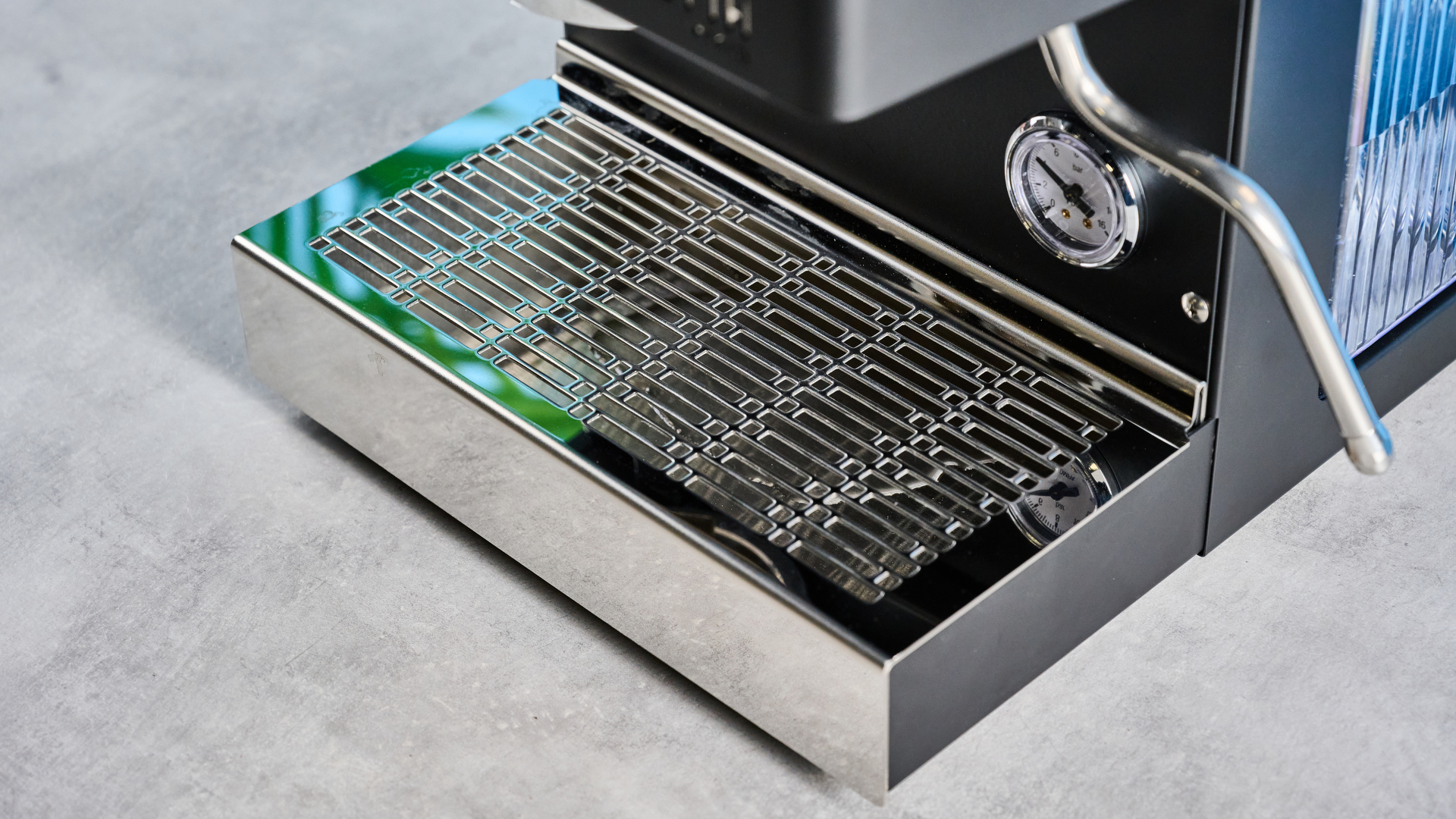
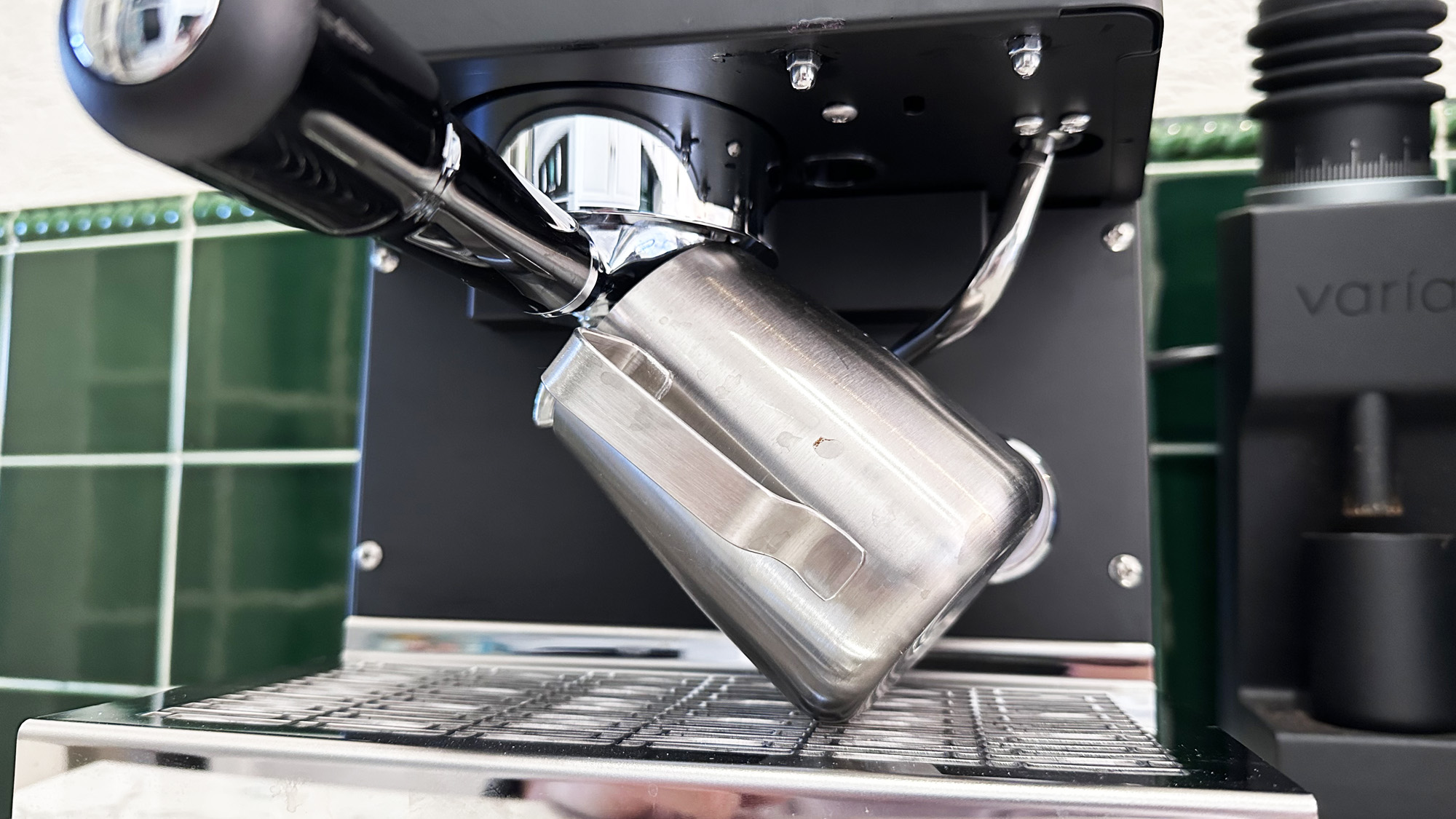
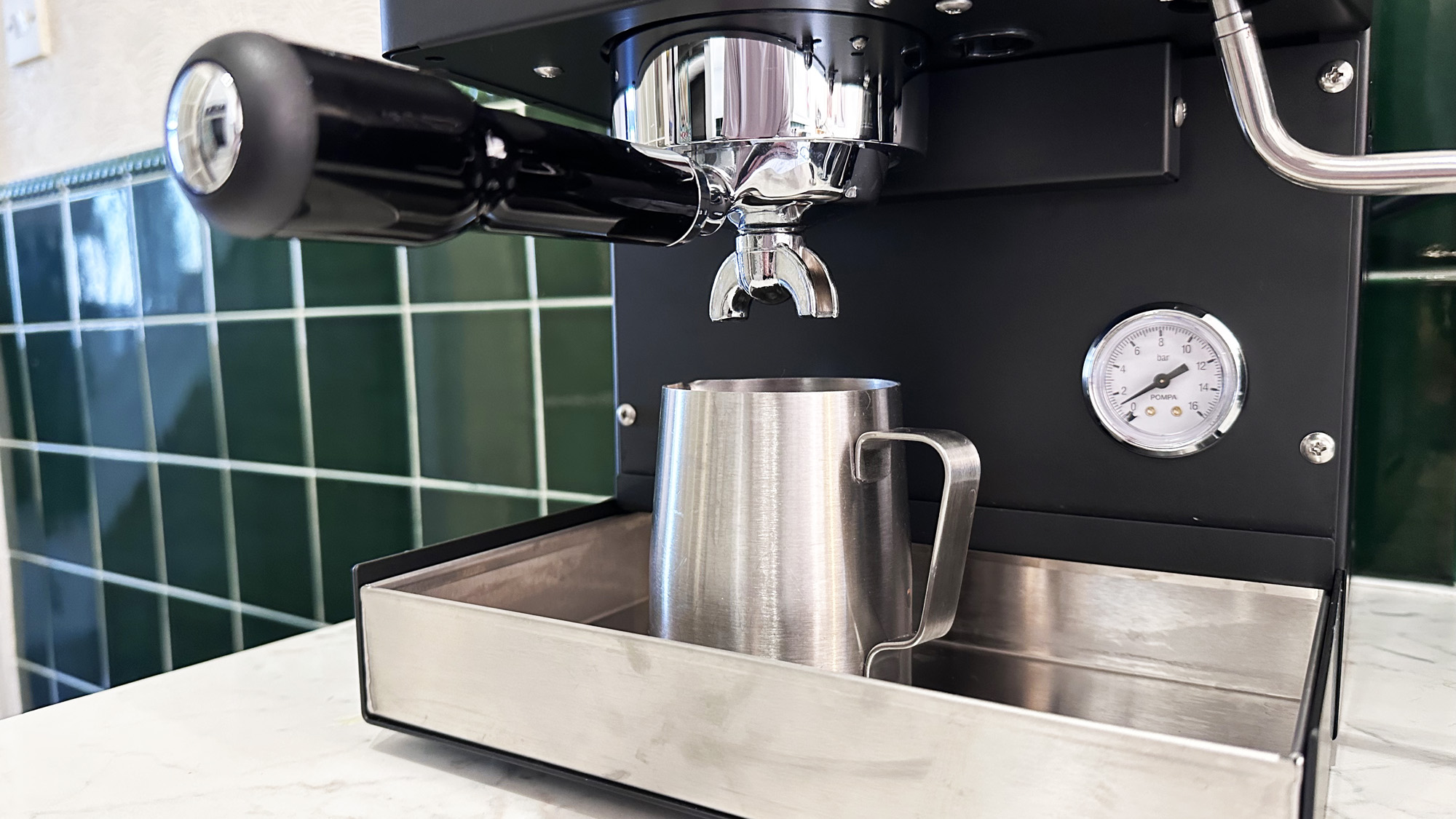
That said, it’s nice not to have to worry about overfilling. I also appreciate the tray’s simplicity, as it’s just a metal box — one of my least favorite things about Breville machines are the drip trays, often made up of complicated plastic pieces that are fiddly and liable to get brittle and snap, causing leaks.
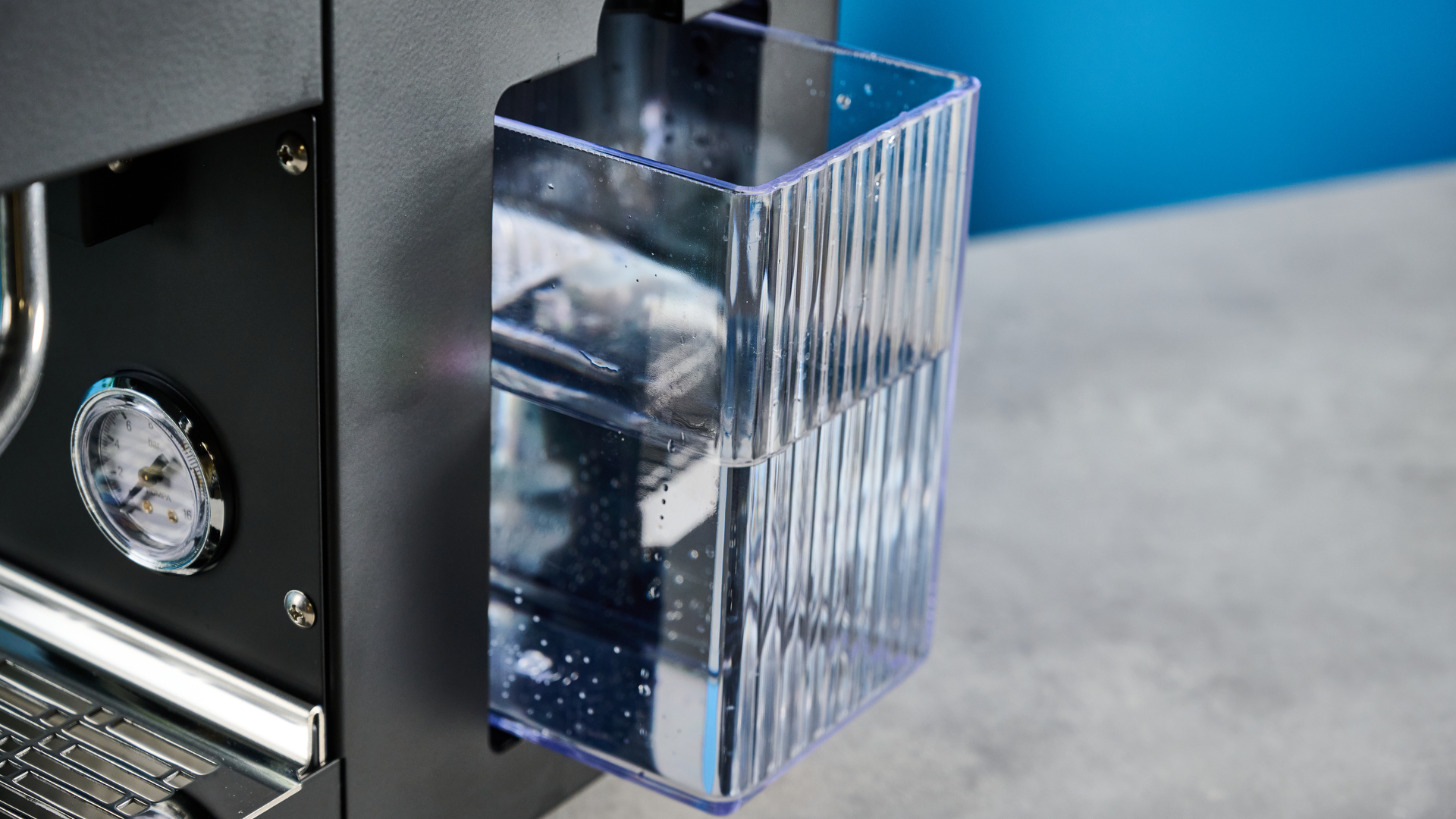
As I mentioned, the water tank is fairly small at 2 liters, so you may need to refill it if you’re making several drinks in succession, which is a minor hassle.
Just above the drip tray is a pressure gauge to help you dial in (by aiming for 9-bar). The machine also features an Over Pressure Valve (OPV) which can be adjusted manually — more experienced users can use this to set and maintain a chosen pressure throughout their pour to achieve a specific flow rate.
Main PID boiler
The Diletta Mio’s water boiler sits at the front, directly above the grouphead, to minimize the amount of travel and therefore heat loss, as the water makes its way from boiler to group. The boiler is only used for espresso.

Unlike the pricier Breville Dual Boiler, the Mio’s group head is not temperature controlled to ensure even temperatures throughout your shot.
The boiler features a PID which controls temperature, meaning you won’t need to ‘temperature surf’ as you would with cheaper, non-PID machines like the Rancilio Silvia V6. You can also set your desired boiler temperature (which I set at 97C/206F) via the digital display on the front of the machine.
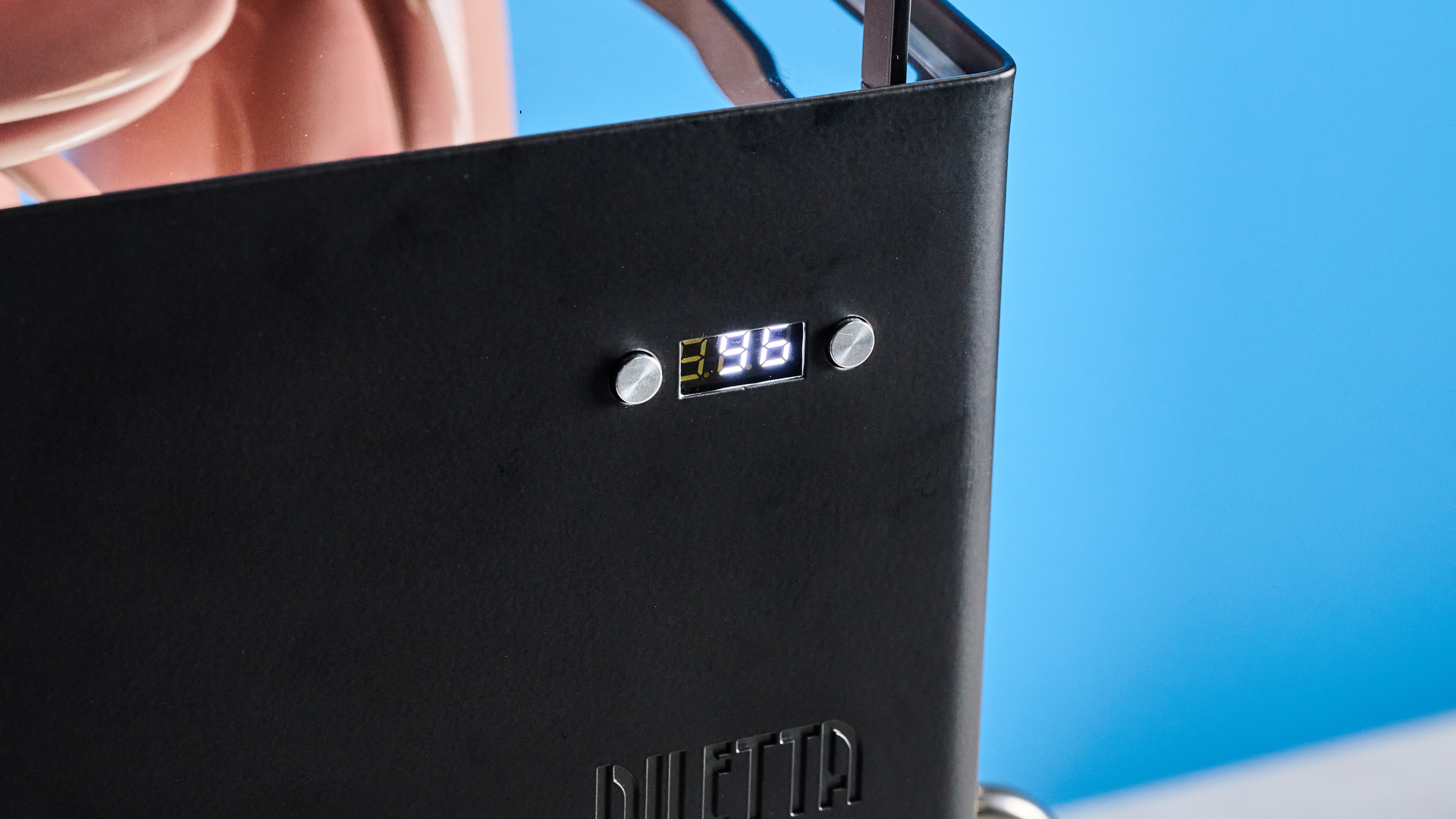
The temperature of the boiler is shown on the digital display when the machine isn’t pouring a shot. Diletta’s operating instructions advise waiting 15 minutes for the machine to heat up, but I found that the espresso boiler heated from 4C/39F to 97C/206F in as little as 3 minutes. Sometimes it likes to sit hovering between 96C and 97C for a few minutes, flashing that it isn’t hot enough, when in reality it’s fine.
The digital display automatically turns into a shot timer when the espresso is pouring. My Felicita Arc scale has an auto-timer, but this will be useful for people with less complex scales.
Thermoblock steam system
In addition to the boiler, the Mio also has a 1000W thermblock system to heat steam. A thermoblock passes water through a coil around a heating element, heating up the liquid as it travels from the tank to its destination (in this case, the steam wand).
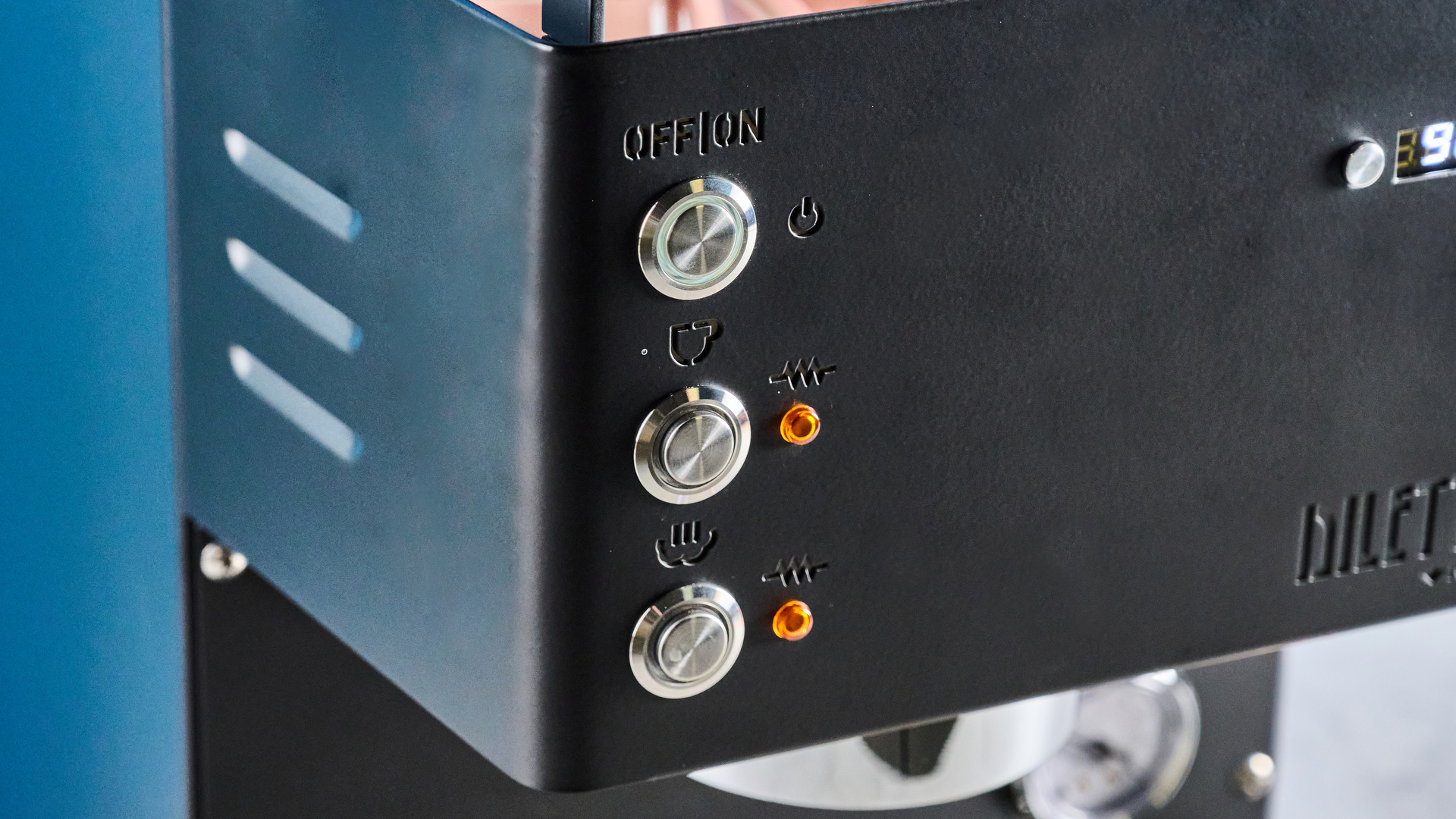
Thermoblocks generally heat up faster than boilers, and indeed the steam system also takes only a few minutes to heat up, often heating before the boiler, so you should be ready just a few minutes after turning the Mio on. This is a notable edge over slower dual-boiler systems.
Dual heating methods mean the Mio is capable of pulling espresso and steaming at the same time, which I was able to do in testing. However, the downside to the thermoblock system is that milk steaming is slower than on a boiler-fed wand.
That said, steaming a large jug of milk takes only slightly longer than pulling a double shot. The main boiler needs a little time to recover after pulling a shot, but we’re talking under a minute, so you can finish your milk steaming, pour your drink, and then you’re ready to pull another shot and steam again.
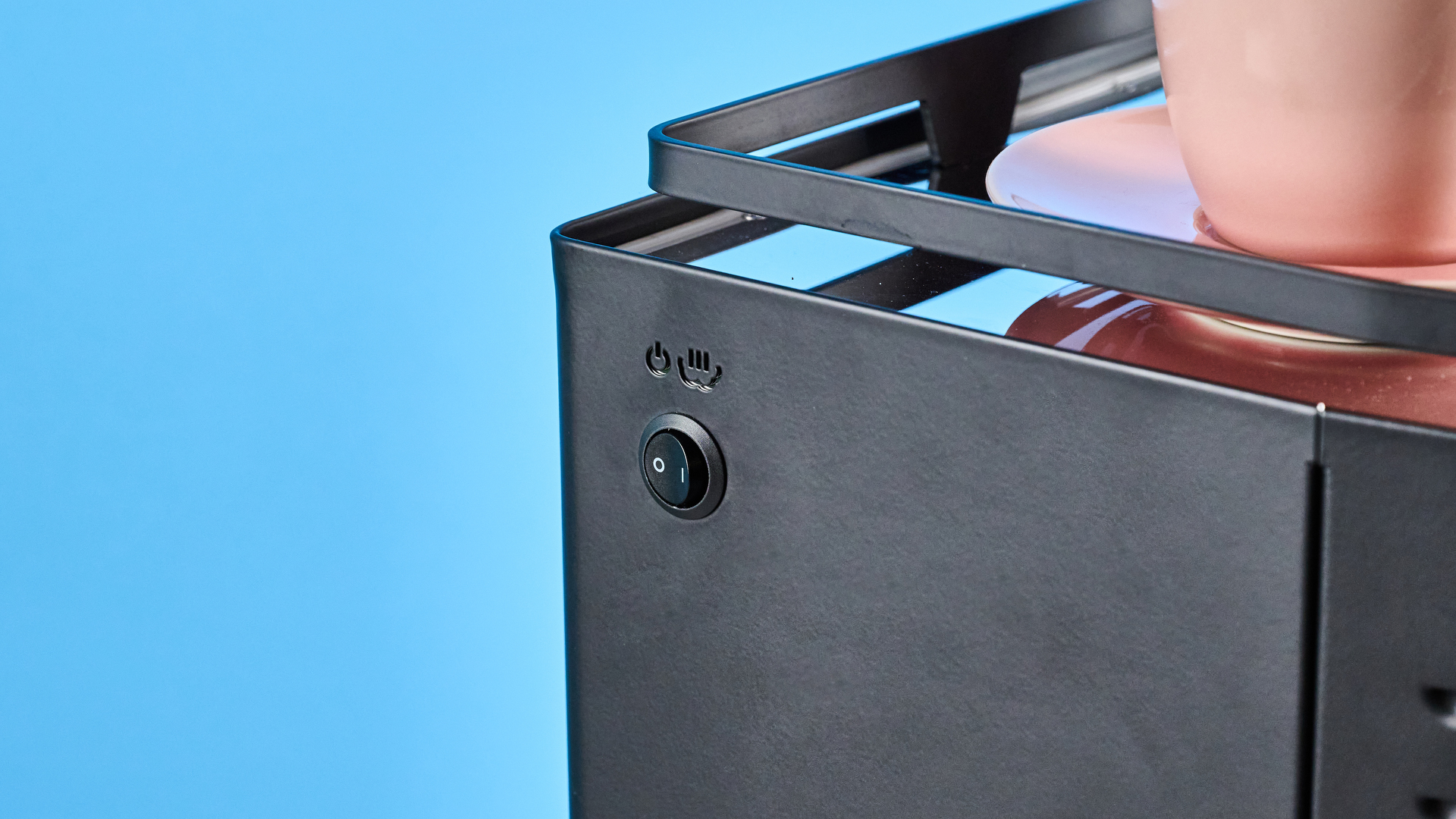
In practice, factoring in knock-out, grinding and tamping time, I found the Mio eminently capable of making back-to-back drinks. I actually made around 7 drinks in a row (a mixture of cappuccinos and flat whites) without any waiting around at all.
Thermoblocks, while slower, are therefore also more forgiving for beginners to steaming, as the slower pace allows easier control and more time for error correction.
Diletta Mio review: Espresso
The Diletta Mio produces great espresso. It happily exerts up to 16-bar pressure, making it an extremely forgiving machine. Literally the first test shot I ran when dialling in was ground far too fine, but the Mio still managed to pull it at about 13-bar. While not ideal, I still had something to drink!
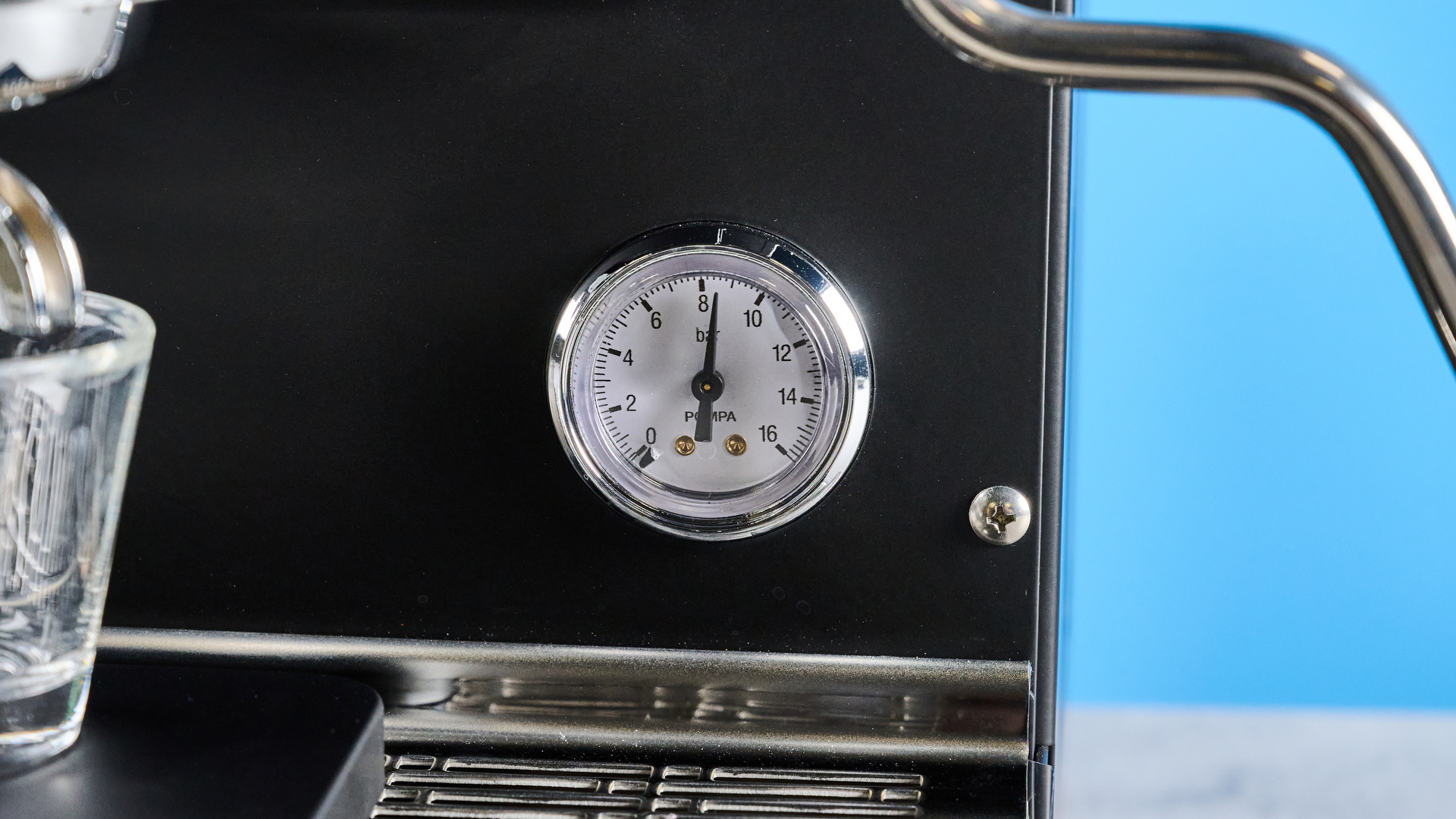
Naturally I continued dialling in, but I can see that flexibility coming in extremely useful. At 6am before my commute, I’m not always in the mood — and often lack the time — to tweak my grind fully. It’s nice to know the Mio will be able to handle things and at least deliver something if I’m not 100% dialled in.
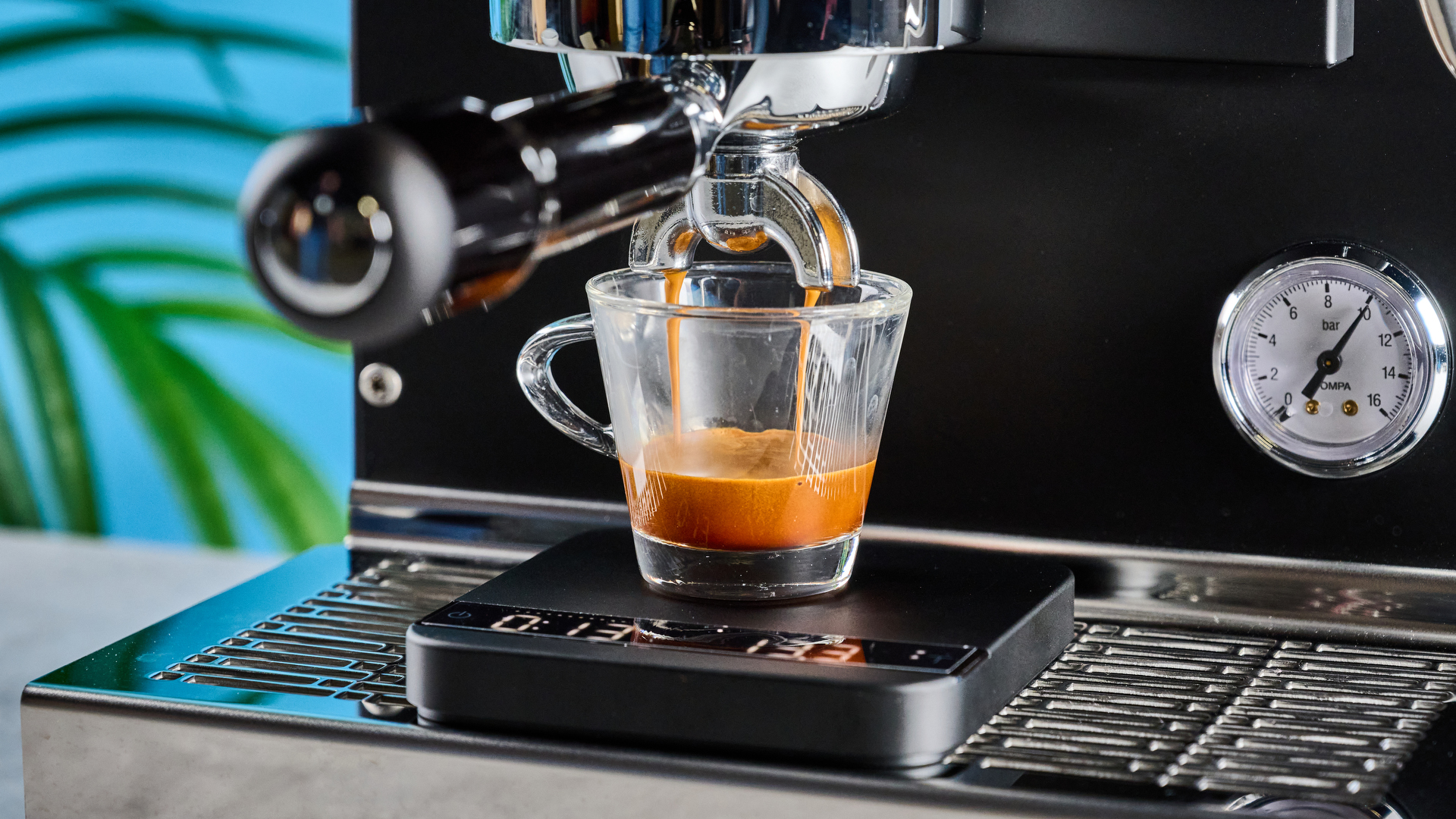
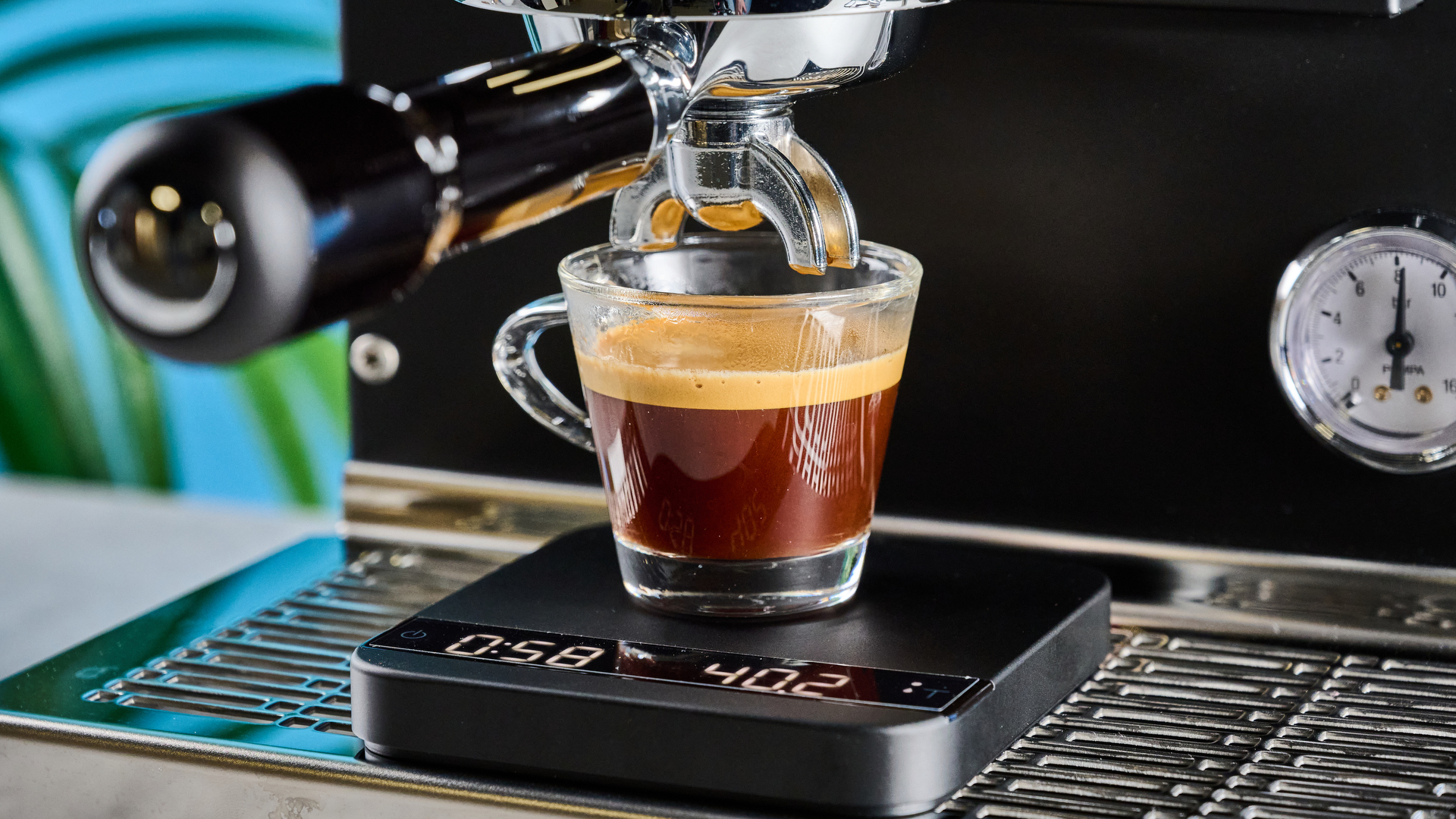
Once you are dialled in, though, pulling at ~9-bar, the espresso is excellent. I tested the machine mostly using Hard Lines’ House Party medium roast coffee beans, roasted for espresso. I ground all the House Party using our Eureka Mignon Specialita benchmark grinder.
I was able to get lovely, rich espresso with tiger-striped crema each time, consistently and with minimal fuss thanks to the PID. Having used these beans as my default espresso fodder for around 3 years, I’m very familiar with them, and the Mio did an excellent job at delivering the deep, chocolatey notes, while also giving some of the slightly acidic upper notes.
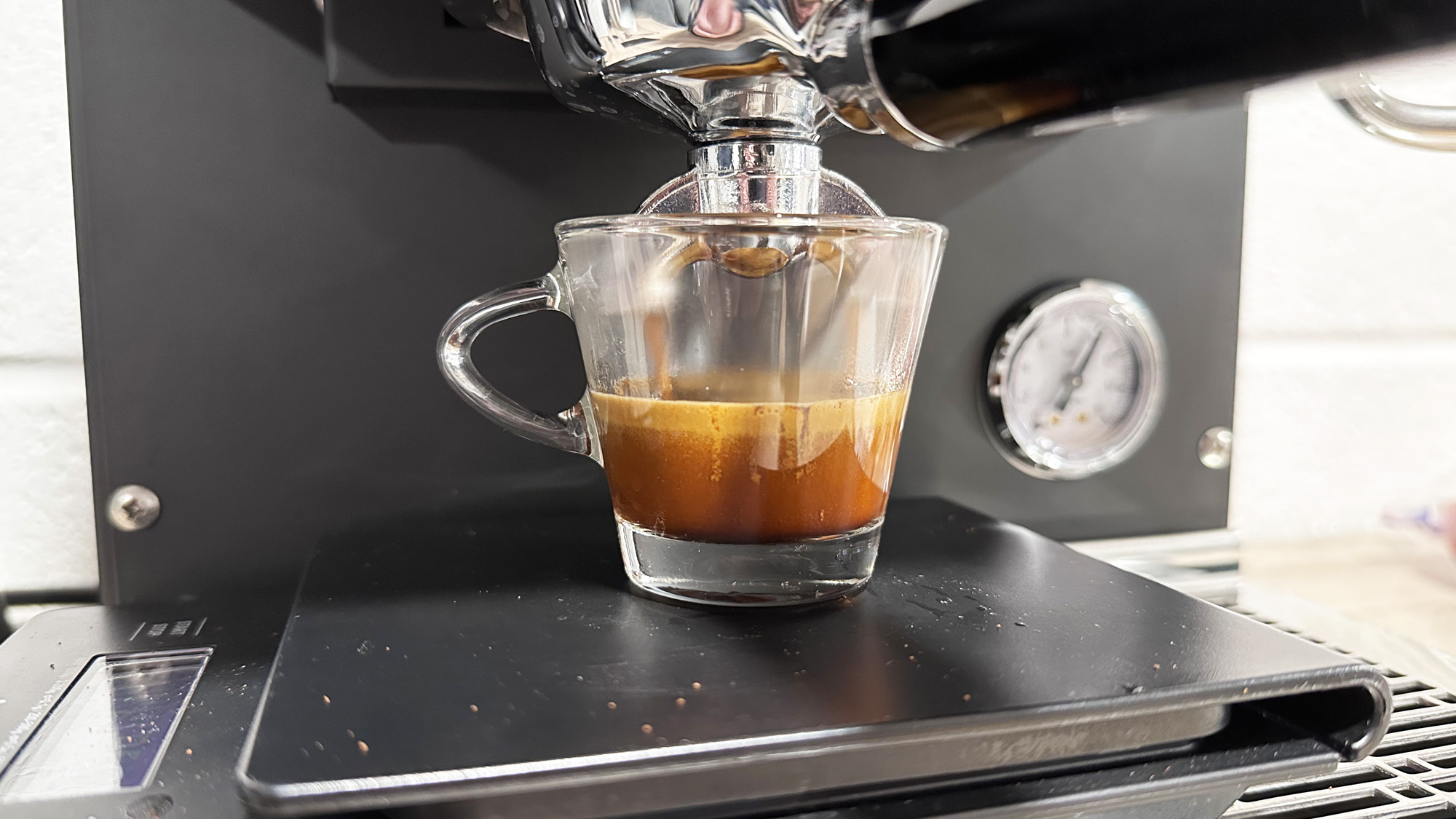
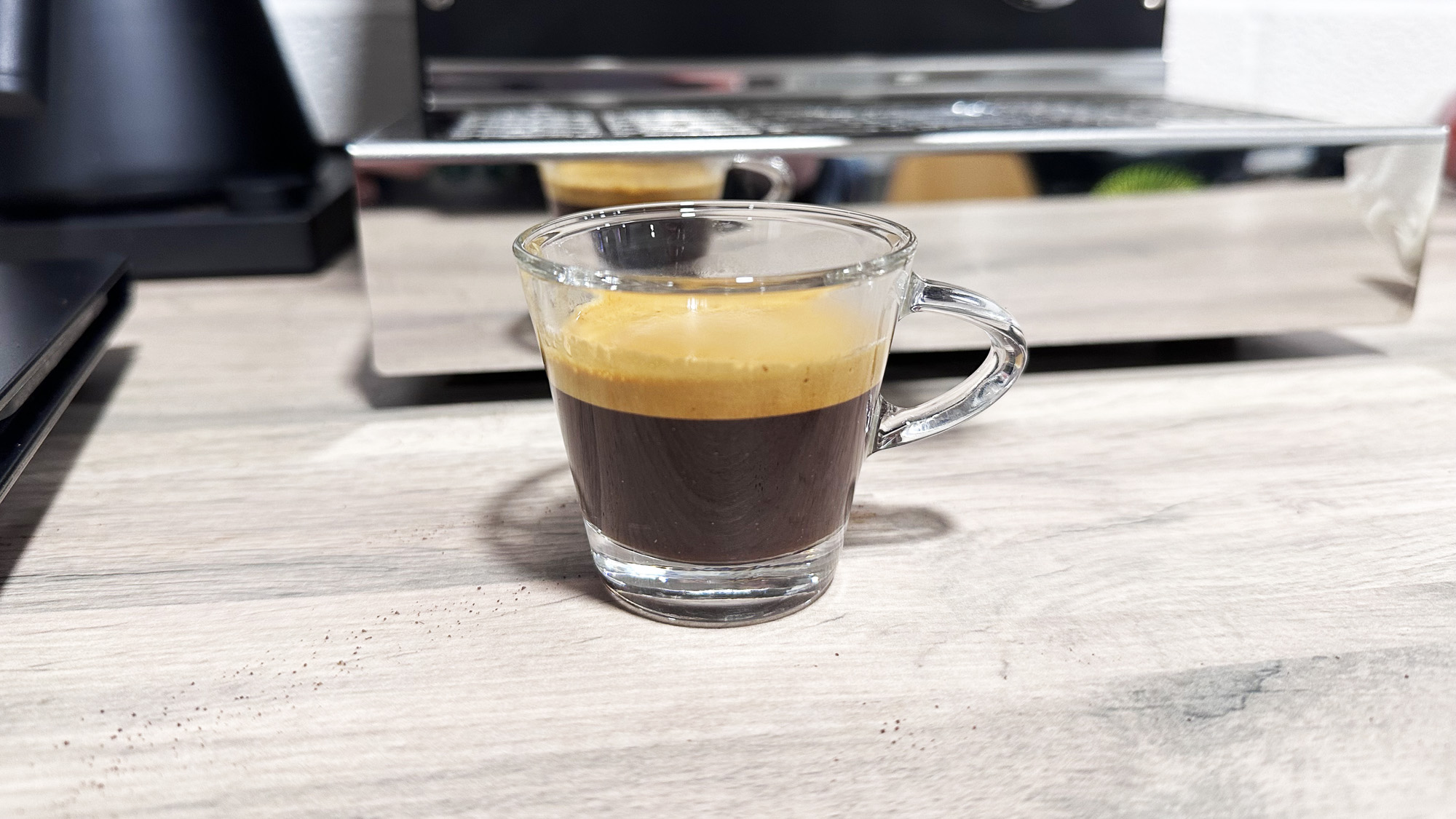
I also tested the Mio using some lighter-roasted, fruitier beans — this time Hard Lines’ Rwandan Kilimbi, which I ground with the Varia VS3 conical burr grinder. Again, the Mio pulled beautiful shots, delivering fruitier, sweeter orange flavors.
The Mio has no pre-infusion setting which is disappointing in a machine this price. Pre-infusion effectively warms up the puck with low pressure water to reduce the likelihood of channeling, thereby increasing shot-to-shot consistency.
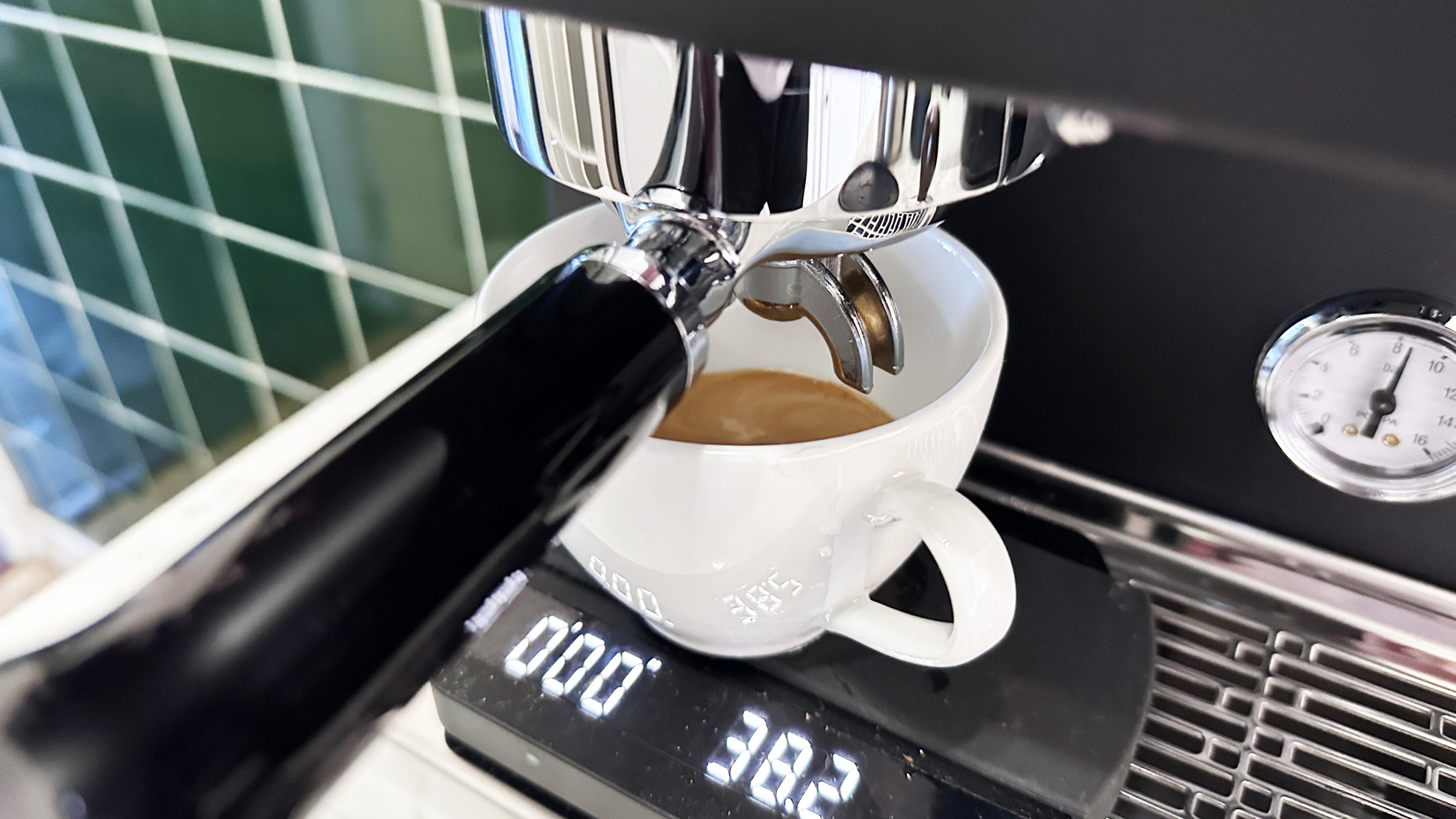
Honestly, I didn’t really notice any consistency issues, but a lot of that is likely down to using good grinders and fresh, well-roasted beans. It would be nice to have the extra safety net of pre-infusion there for experimenting with different beans or testing different grinders. It’s worth paying extra attention to your puck distribution and tamping regime to mitigate this omission.
Diletta Mio review: Milk
The Diletta Mio uses a thermoblock to produce steam. This creates steam more slowly than a boiler-heated system, so milk steaming takes longer. It takes a similar amount of time as using a cheaper thermoblock machine like the Breville Bambino Plus. Budget around 45-60 seconds for an 8-ounce drink.


As I’ve already covered, I didn’t find this slow enough to hamper back-to-back drinks, although I prefer more power, and I found myself missing the control knob of more powerful, boiler-fed systems. The slower steaming rate will benefit beginners, though, as it’s more forgiving.
I tested the Mio by making cappuccinos and flat whites, where I had no issues. I was able to get the springy, marshmallow texture for cappuccinos, as well as the slightly thinner, more velvety milk for flat whites.
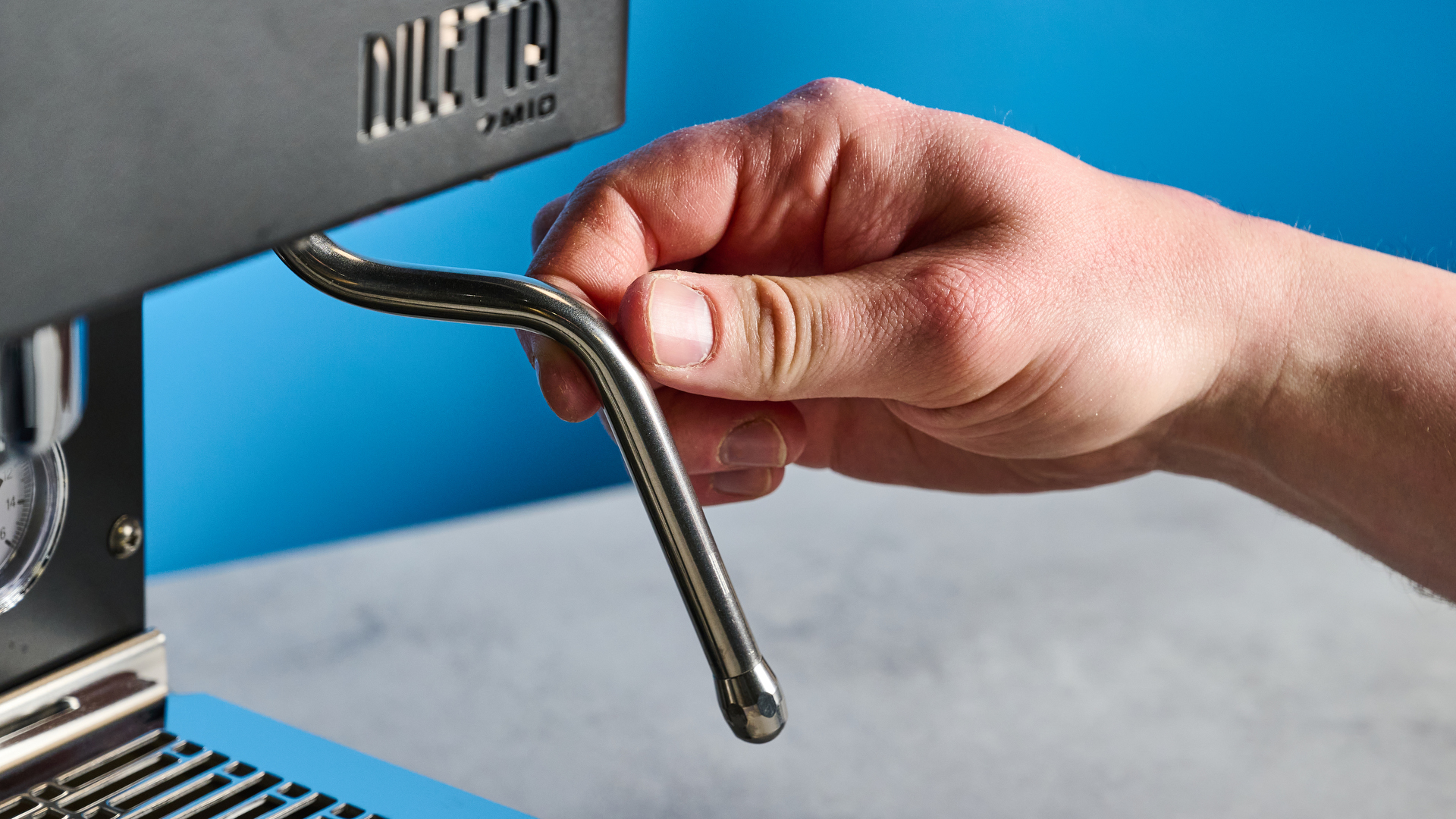
You may notice that there’s no rubber anti-scorch grip on the steam wand. Apparently, the wand is a ‘No-Burn’ wand, although I didn’t dare touch it during use. I did test this a few seconds after steaming, though, and it was fine.
Diletta Mio review: Storage and maintenance
The Mio isn’t the biggest home espresso machine on the market, but it’s far from compact, and won’t be ideal for those with limited worktop space or compact coffee stations.
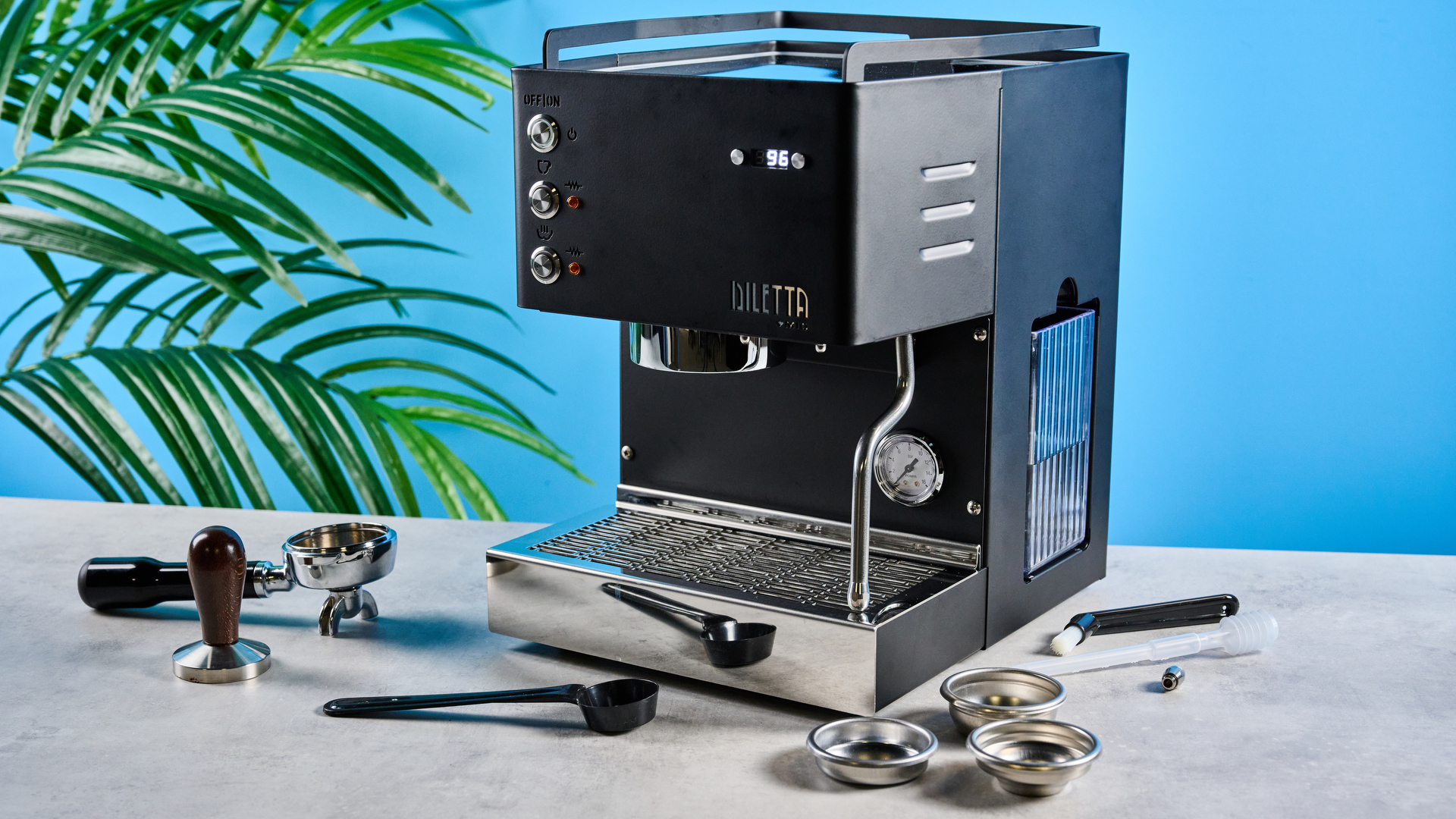
Maintenance is the same as for any other manual espresso machine: wipe down regularly; clean the group between shots; stay on top of emptying the drip tray; wiping and purging the steam wand after use; and descaling regularly, with more regular descales if you live in a hard water area.
Diletta supplies all the tools needed for cleaning. In the box you’ll find a pipette, an angled plastic brush and a metal backflush puck.
Diletta Mio review: How does it compare?
Pretty favorably, to be honest. A steam thermoblock instead of a second boiler may be off-putting to more seasoned users. A boiler will steam milk much faster than a thermoblock. For home use, I don’t think a second steam boiler is particularly necessary, as demonstrated by my ability to make several drinks consecutively.
While on paper a thermoblock is a downgrade from a second boiler, in real terms, it hasn’t really slowed me down much when making back-to-back drinks.

If you do want a second boiler, though, the closest in price is the Breville Dual Boiler, which will cost an extra $250. The Breville has a great array of features, including pre-infusion, but brings that plasticky Breville build and questionable long-term repairability.
The Diletta Mio is a big step up over entry-level and mid-range machines with single boilers or thermoblocks, including the Rancilio Silvia V6, Gaggia Classic and Breville Duo-Temp Pro. Having the secondary heating system for steam makes simultaneous pouring/steaming possible, as well as consecutive drinks. The Mio offers a lot more features than these machines, too, including its adjustable temperature control and OPV.
Essentially, I think the Diletta Mio is priced fairly. It offers many of the benefits of a dual boiler machine at a lower price, with a few modest drawbacks.
Diletta Mio review: Verdict
The Diletta Mio isn’t perfect, but all its cons are relatively minor, especially in the face of its pros. Yes, the drip tray is stupidly large and the tank hilariously small. Yes, the steam wand desperately needs an anti-scorch grip. But those are just peripheral issues in the grand scheme of things.
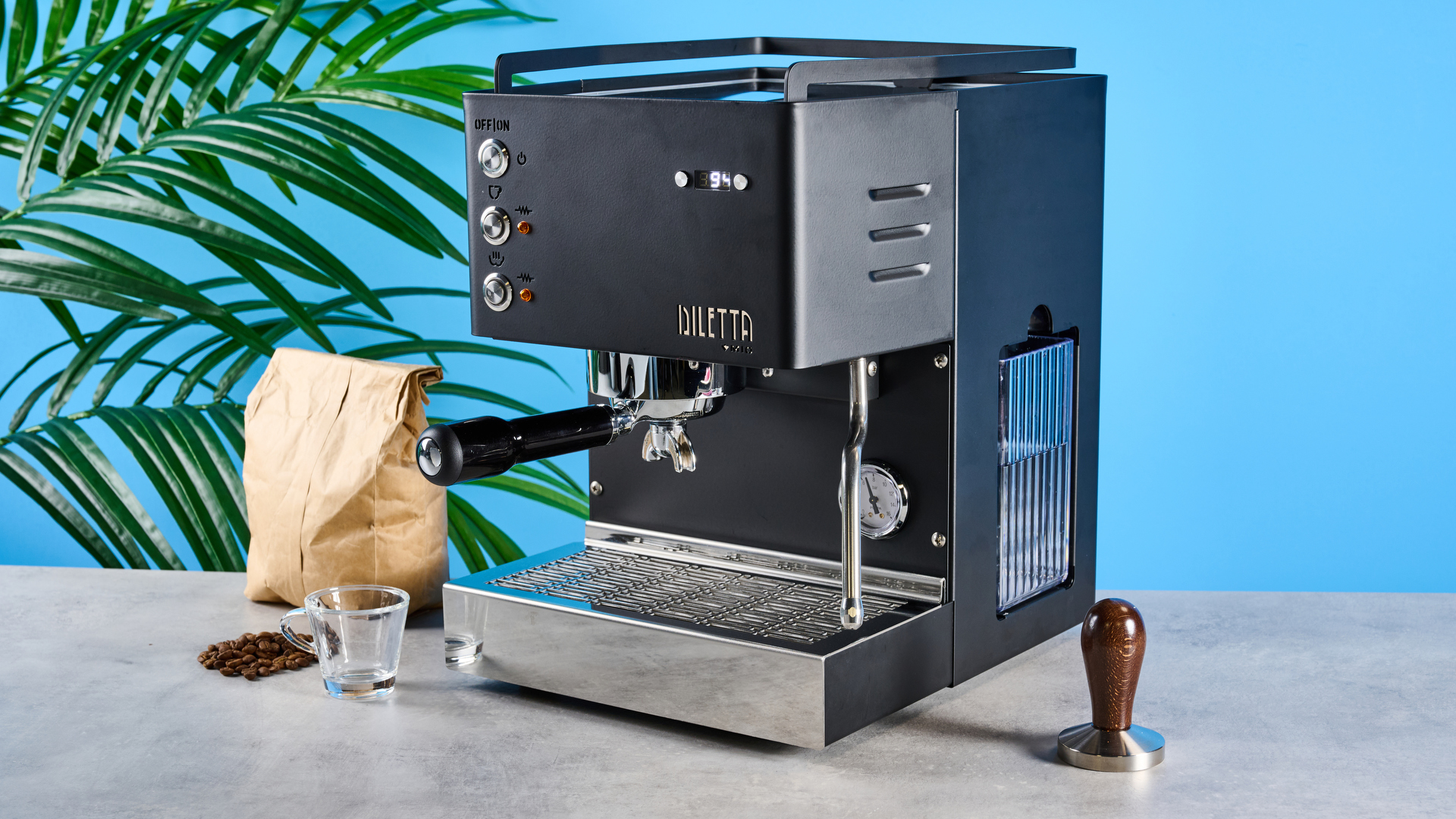
For a cool $250 less than the cheapest dual-boiler competition, the Mio offers similar performance: simultaneous pouring and steaming, back-to-back drinks, rapid heat up, PID control, OPV pressure adjustment. This is an espresso machine equipped for serious enthusiasts, and makes great espresso accordingly.
Diletta Mio: $1,349 @ Seattle Coffee Gear
A combination boiler and thermoblock espresso machine, the Diletta Mio offers the perks of dual-boiler machines, such as simultaneous pouring/steaming and back-to-back drinks, with the benefit of thermoblock machines, including rapid heat-up and easier manual milk steaming. It isn't perfect, but costs less than much of the dual-boiler competition.
It’s also easy to use, suiting it equally to budget-endowed beginners. The slower thermoblock-powered steam wand is forgiving, as is the high-pressure pump. This could be a great investment for a relative newcomer to espresso wanting to spend big on a machine that will last.
I just wish Diletta made it in 230V — if it did, I’d be keeping the Mio for good.

Peter is a Senior Editor at Tom's Guide, heading up the site's Reviews team and Cameras section. As a writer, he covers topics including tech, photography, gaming, hardware, motoring and food & drink. Outside of work, he's an avid photographer, specialising in architectural and portrait photography. When he's not snapping away on his beloved Fujifilm camera, he can usually be found telling everyone about his greyhounds, riding his motorcycle, squeezing as many FPS as possible out of PC games, and perfecting his espresso shots.
You must confirm your public display name before commenting
Please logout and then login again, you will then be prompted to enter your display name.
